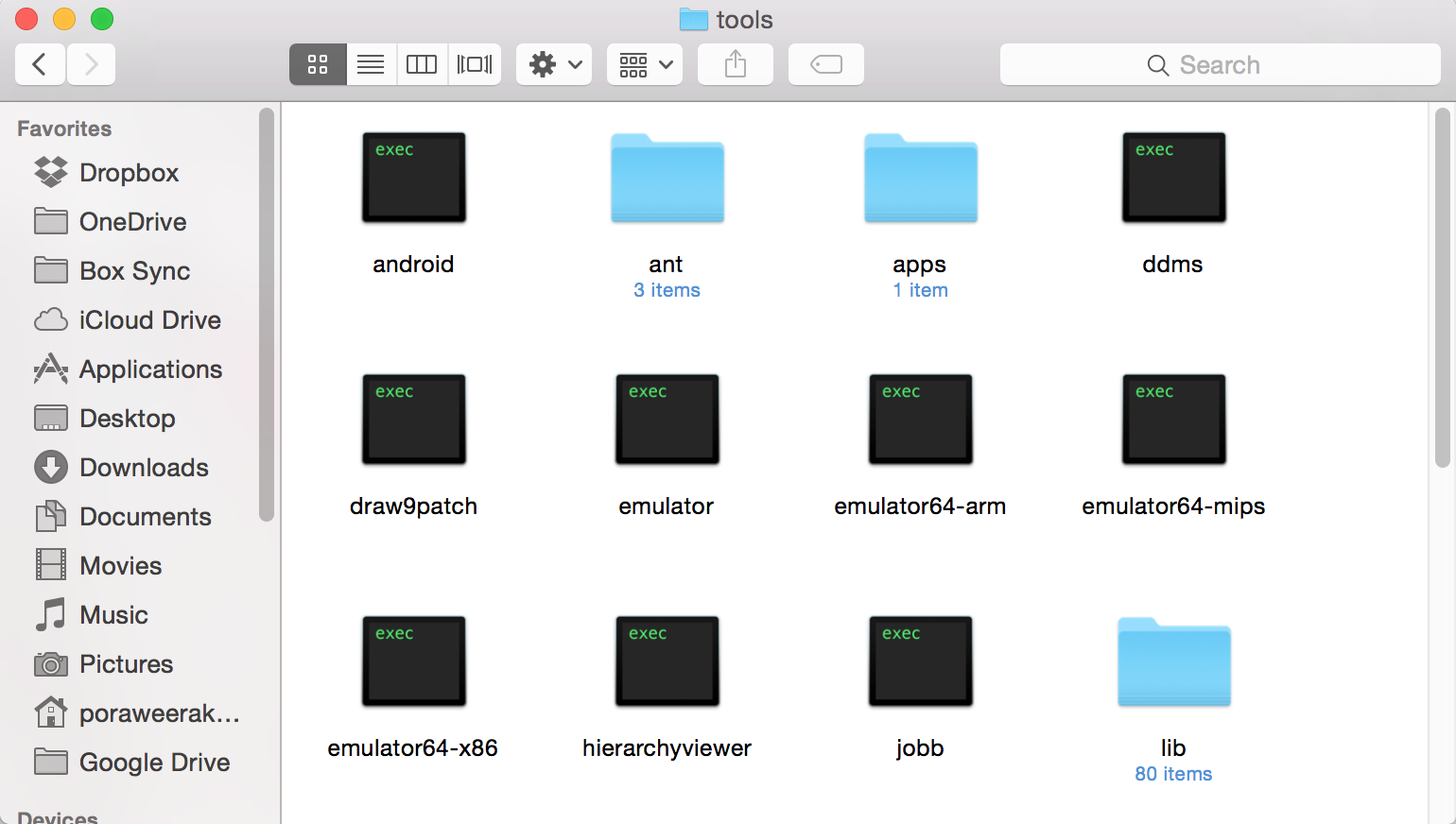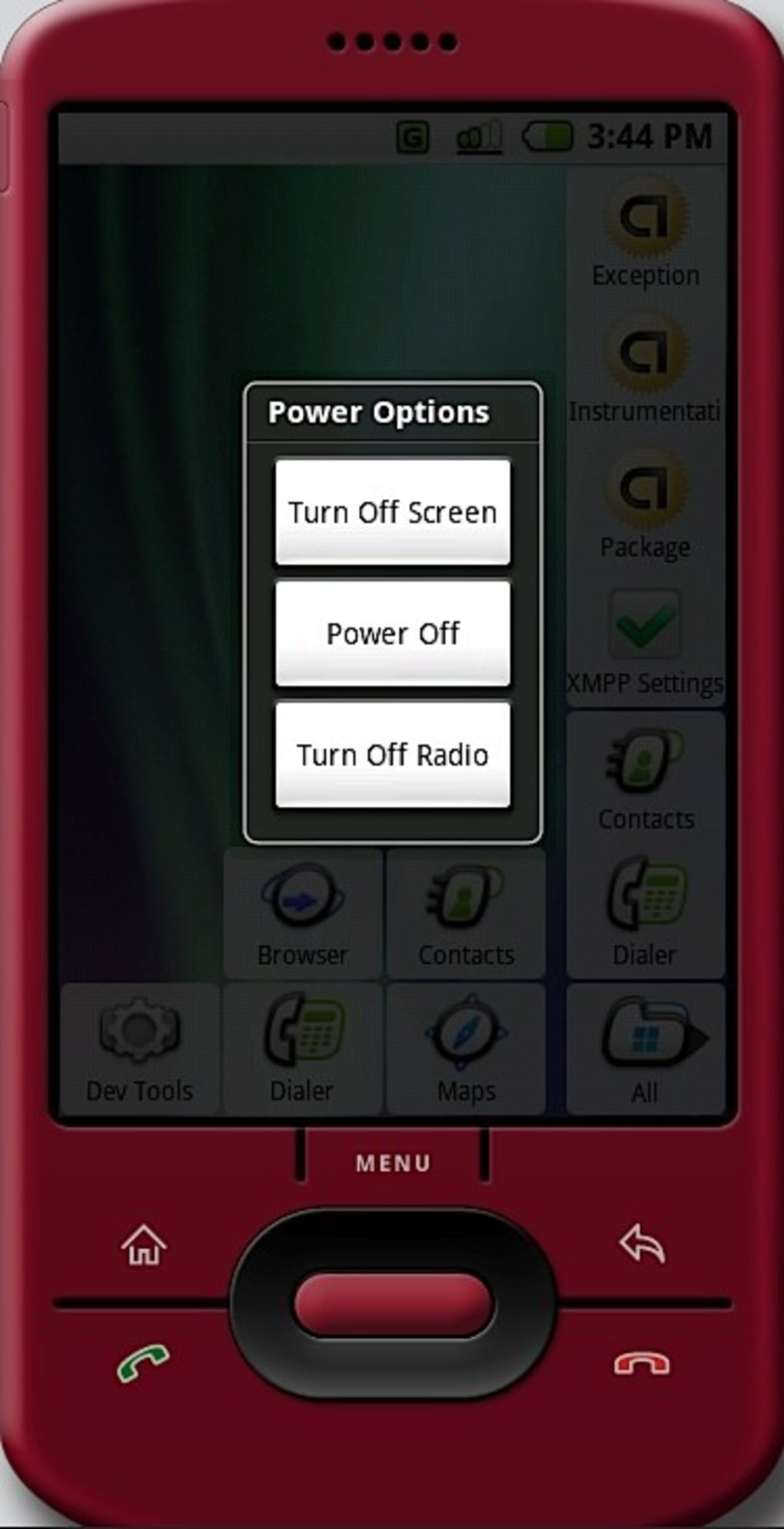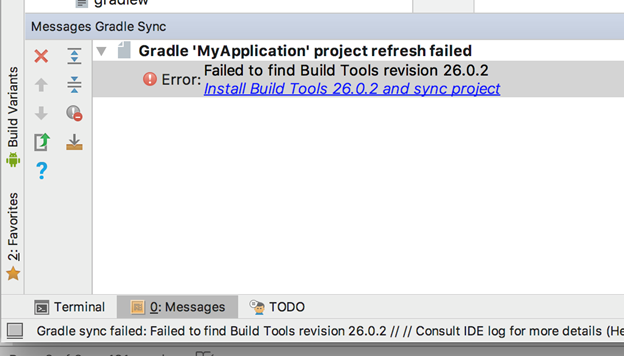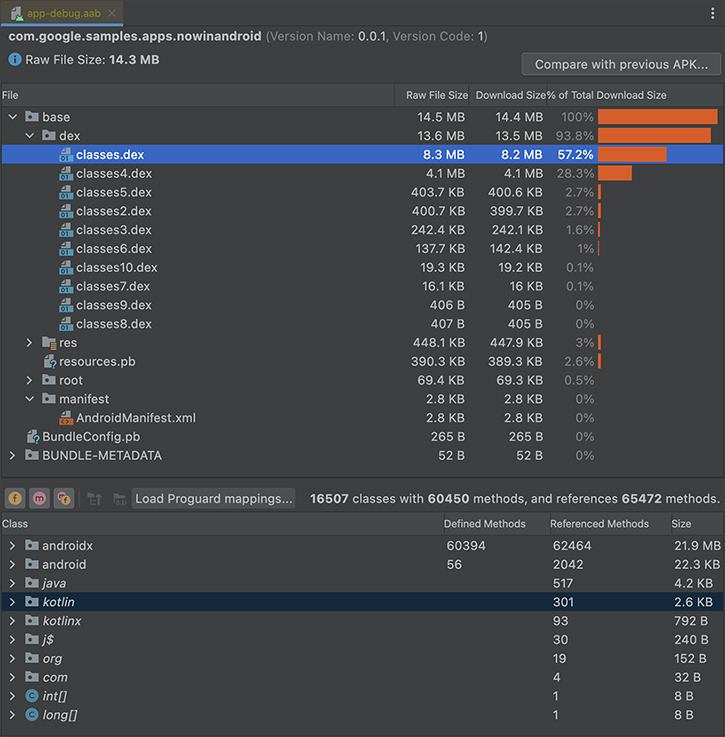-->
- Mac Install Android Sdk
- Download Android Sdk For Unity Mac
- Download Android Sdk For Visual Studio Mac
- Android Sdk For Mac
- Sdk Android For Mac Download Version
Android File Transfer. Browse and transfer files between your Mac computer and your Android device. For Mac OS X only. No extra software is needed for Windows. Supports macOS 10.7 and higher. Moreover, if you prefer to use Android SDK with existing versions of Eclipse or other IDE, you have the option to download the stand-along Android SDK Tools. The Android SDK comes with a comprehensive set of developer tools that include libraries, handset emulator based on QEMU, a.
Visual Studio includes an Android SDK Manager that you useto download Android SDK tools, platforms, and other components that youneed for developing Xamarin.Android apps.
Overview

This guide explains how to use the Xamarin Android SDK Manager inVisual Studio and Visual Studio for Mac.
Note
This guide applies to Visual Studio 2019, Visual Studio 2017, and Visual Studio for Mac.
Mac Install Android Sdk
The Xamarin Android SDK Manager (installed as part of the Mobiledevelopment with .NET workload) helps you download the latest Androidcomponents that you need for developing your Xamarin.Android app. Itreplaces Google's standalone SDK Manager, which has been deprecated.
Requirements
To use the Xamarin Android SDK Manager, you will need the following:
Visual Studio 2019 Community, Professional, or Enterprise.
OR Visual Studio 2017 (Community, Professional, or Enterprise edition). VisualStudio 2017 version 15.7 or later is required.
Visual Studio Tools for Xamarin version 4.10.0 or later(installed as part of the Mobile development with .NET workload).
The Xamarin Android SDK Manager also requires the Java Development Kit(which is automatically installed with Xamarin.Android). There areseveral JDK alternatives to choose from:
By default, Xamarin.Android usesJDK 8,which is required if you are developing for API level 24 or greater(JDK 8 also supports API levels earlier than 24).
You can continue to use JDK 7if you are developing specifically for API level 23 or earlier.
If you are using Visual Studio 15.8 Preview 5 or later, you can tryusing Microsoft's Mobile OpenJDK Distributionrather than JDK 8.

SDK Manager
To start the SDK Manager in Visual Studio, click Tools > Android >Android SDK Manager:
The Android SDK Manager opens in the Android SDKs andTools screen. This screen has two tabs – Platforms andTools:
The Android SDKs and Tools screen is described in more detail inthe following sections.
Android SDK location
The Android SDK location is configured at the top of the Android SDKsand Tools screen, as seen in the previous screenshot. This location mustbe configured correctly before the Platforms and Tools tabswill function properly. You may need to set the location of the AndroidSDK for one or more of the following reasons:
The Android SDK Manager was unable to locate the Android SDK.
Select Yes.The install begins.Your install is finished when you see the phrase, 'You're all set! Select Close.Follow the instructions in the window to find your Office apps. Office home and business for mac 2011. Office is installed now' and an animation plays to show you where to find Office applications on your computer.
You have installed the Android SDK in a alternate (non-default) location.
To set the location of the Android SDK, click the ellipsis (…)button to the far right of Android SDK Location. This opens theBrowse For Folder dialog to use for navigating to the location ofthe Android SDK. In the following screenshot, the Android SDK underProgram Files (x86)Android is being selected:
When you click OK, the SDK Manager will manage the Android SDK thatis installed at the selected location.
Tools tab
The Tools tab displays a list of tools and extras. Use this tabto install the Android SDK tools, platform tools, and build tools.Also, you can install the Android Emulator, the low-level debugger(LLDB), the NDK, HAXM acceleration, and Google Play libraries.
For example, to download the Google Android Emulator package, click thecheck mark next to Android Emulator and click the Apply Changesbutton:
Download Android Sdk For Unity Mac
A dialog may be shown with the message, The following package requiresthat you accept its license terms before installing:
Click Accept if you accept the Terms and Conditions. At the bottomof the window, a progress bar indicates download and installationprogress. After the installation completes, the Tools tab will showthat the selected tools and extras were installed.
Platforms tab
The Platforms tab displays a list of platform SDK versions alongwith other resources (like system images) for each platform:
This screen lists the Android version (such as Android 8.0), thecode name (Oreo), the API level (such as 26), and the sizes ofthe components for that platform (such as 1 GB). You use thePlatforms tab to install components for the Android API level thatyou want to target. For more information about Android versions and APIlevels, seeUnderstanding Android API Levels.
When all components of a platform are installed, a checkmark appears nextto the platform name. If not all components of a platform areinstalled, the box for that platform is filled.You can expand a platform to see its components (and which componentsare installed) by clicking the + box to the left of the platform.Click - to unexpand the component listing for a platform.
To add another platform to the SDK, click the box next to the platformuntil the checkmark appears to install all of its components, thenclick Apply Changes:
To install only specific components, click the box next to the platformonce. You can then select any individual components that you need:
Notice that the number of components to install appears next to theApply Changes button. After you click the Apply Changes button,you will see the License Acceptance screen as shown earlier.Click Accept if you accept the Terms and Conditions. You may seethis dialog more than one time when there are multiple components toinstall. At the bottom of the window, a progress bar will indicatedownload and installation progress. When the download and installationprocess completes (this can take many minutes, depending on how manycomponents need to be downloaded), the added components are marked witha checkmark and listed as Installed.
Repository selection

By default, the Android SDK Manager downloads platform components andtools from a Microsoft-managed repository. If you need access toexperimental alpha/beta platforms and tools that are not yet availablein the Microsoft repository, you can switch the SDK Manager to useGoogle's repository. To make this switch, click the gear icon in thelower right-hand corner and select Repository > Google(Unsupported):
When the Google repository is selected, additional packages may appearin the Platforms tab that were not available previously. (In theabove screenshot, Android SDK Platform 28 was added by switching tothe Google repository.) Keep in mind that use of the Google repositoryis unsupported and is therefore not recommended for everydaydevelopment.
To switch back to the supported repository of platforms and tools,click Microsoft (Recommended). This restores the list of packagesand tools to the default selection.
Requirements

To use the Xamarin Android SDK Manager, you will need the following:
- Visual Studio for Mac 7.5 (or later).
The Xamarin Android SDK Manager also requires the Java Development Kit(which is automatically installed with Xamarin.Android). There areseveral JDK alternatives to choose from:
By default, Xamarin.Android usesJDK 8,which is required if you are developing for API level 24 or greater(JDK 8 also supports API levels earlier than 24).
You can continue to use JDK 7if you are developing specifically for API level 23 or earlier.
If you are using Visual Studio for Mac 7.7 or later, you can tryusing Microsoft's Mobile OpenJDK Distributionrather than JDK 8.
Important
Xamarin.Android does not support JDK 9.
SDK Manager
To start the SDK Manager in Visual Studio for Mac, click Tools > SDK Manager:
The Android SDK Manager opens in the Preferences window, whichcontains three tabs, Platforms, Tools, and Locations:
The tabs of the Android SDK Manager are described in thefollowing sections.
Locations tab

This guide explains how to use the Xamarin Android SDK Manager inVisual Studio and Visual Studio for Mac.
Note
This guide applies to Visual Studio 2019, Visual Studio 2017, and Visual Studio for Mac.
Mac Install Android Sdk
The Xamarin Android SDK Manager (installed as part of the Mobiledevelopment with .NET workload) helps you download the latest Androidcomponents that you need for developing your Xamarin.Android app. Itreplaces Google's standalone SDK Manager, which has been deprecated.
Requirements
To use the Xamarin Android SDK Manager, you will need the following:
Visual Studio 2019 Community, Professional, or Enterprise.
OR Visual Studio 2017 (Community, Professional, or Enterprise edition). VisualStudio 2017 version 15.7 or later is required.
Visual Studio Tools for Xamarin version 4.10.0 or later(installed as part of the Mobile development with .NET workload).
The Xamarin Android SDK Manager also requires the Java Development Kit(which is automatically installed with Xamarin.Android). There areseveral JDK alternatives to choose from:
By default, Xamarin.Android usesJDK 8,which is required if you are developing for API level 24 or greater(JDK 8 also supports API levels earlier than 24).
You can continue to use JDK 7if you are developing specifically for API level 23 or earlier.
If you are using Visual Studio 15.8 Preview 5 or later, you can tryusing Microsoft's Mobile OpenJDK Distributionrather than JDK 8.
SDK Manager
To start the SDK Manager in Visual Studio, click Tools > Android >Android SDK Manager:
The Android SDK Manager opens in the Android SDKs andTools screen. This screen has two tabs – Platforms andTools:
The Android SDKs and Tools screen is described in more detail inthe following sections.
Android SDK location
The Android SDK location is configured at the top of the Android SDKsand Tools screen, as seen in the previous screenshot. This location mustbe configured correctly before the Platforms and Tools tabswill function properly. You may need to set the location of the AndroidSDK for one or more of the following reasons:
The Android SDK Manager was unable to locate the Android SDK.
Select Yes.The install begins.Your install is finished when you see the phrase, 'You're all set! Select Close.Follow the instructions in the window to find your Office apps. Office home and business for mac 2011. Office is installed now' and an animation plays to show you where to find Office applications on your computer.
You have installed the Android SDK in a alternate (non-default) location.
To set the location of the Android SDK, click the ellipsis (…)button to the far right of Android SDK Location. This opens theBrowse For Folder dialog to use for navigating to the location ofthe Android SDK. In the following screenshot, the Android SDK underProgram Files (x86)Android is being selected:
When you click OK, the SDK Manager will manage the Android SDK thatis installed at the selected location.
Tools tab
The Tools tab displays a list of tools and extras. Use this tabto install the Android SDK tools, platform tools, and build tools.Also, you can install the Android Emulator, the low-level debugger(LLDB), the NDK, HAXM acceleration, and Google Play libraries.
For example, to download the Google Android Emulator package, click thecheck mark next to Android Emulator and click the Apply Changesbutton:
Download Android Sdk For Unity Mac
A dialog may be shown with the message, The following package requiresthat you accept its license terms before installing:
Click Accept if you accept the Terms and Conditions. At the bottomof the window, a progress bar indicates download and installationprogress. After the installation completes, the Tools tab will showthat the selected tools and extras were installed.
Platforms tab
The Platforms tab displays a list of platform SDK versions alongwith other resources (like system images) for each platform:
This screen lists the Android version (such as Android 8.0), thecode name (Oreo), the API level (such as 26), and the sizes ofthe components for that platform (such as 1 GB). You use thePlatforms tab to install components for the Android API level thatyou want to target. For more information about Android versions and APIlevels, seeUnderstanding Android API Levels.
When all components of a platform are installed, a checkmark appears nextto the platform name. If not all components of a platform areinstalled, the box for that platform is filled.You can expand a platform to see its components (and which componentsare installed) by clicking the + box to the left of the platform.Click - to unexpand the component listing for a platform.
To add another platform to the SDK, click the box next to the platformuntil the checkmark appears to install all of its components, thenclick Apply Changes:
To install only specific components, click the box next to the platformonce. You can then select any individual components that you need:
Notice that the number of components to install appears next to theApply Changes button. After you click the Apply Changes button,you will see the License Acceptance screen as shown earlier.Click Accept if you accept the Terms and Conditions. You may seethis dialog more than one time when there are multiple components toinstall. At the bottom of the window, a progress bar will indicatedownload and installation progress. When the download and installationprocess completes (this can take many minutes, depending on how manycomponents need to be downloaded), the added components are marked witha checkmark and listed as Installed.
Repository selection
By default, the Android SDK Manager downloads platform components andtools from a Microsoft-managed repository. If you need access toexperimental alpha/beta platforms and tools that are not yet availablein the Microsoft repository, you can switch the SDK Manager to useGoogle's repository. To make this switch, click the gear icon in thelower right-hand corner and select Repository > Google(Unsupported):
When the Google repository is selected, additional packages may appearin the Platforms tab that were not available previously. (In theabove screenshot, Android SDK Platform 28 was added by switching tothe Google repository.) Keep in mind that use of the Google repositoryis unsupported and is therefore not recommended for everydaydevelopment.
To switch back to the supported repository of platforms and tools,click Microsoft (Recommended). This restores the list of packagesand tools to the default selection.
Requirements
To use the Xamarin Android SDK Manager, you will need the following:
- Visual Studio for Mac 7.5 (or later).
The Xamarin Android SDK Manager also requires the Java Development Kit(which is automatically installed with Xamarin.Android). There areseveral JDK alternatives to choose from:
By default, Xamarin.Android usesJDK 8,which is required if you are developing for API level 24 or greater(JDK 8 also supports API levels earlier than 24).
You can continue to use JDK 7if you are developing specifically for API level 23 or earlier.
If you are using Visual Studio for Mac 7.7 or later, you can tryusing Microsoft's Mobile OpenJDK Distributionrather than JDK 8.
Important
Xamarin.Android does not support JDK 9.
SDK Manager
To start the SDK Manager in Visual Studio for Mac, click Tools > SDK Manager:
The Android SDK Manager opens in the Preferences window, whichcontains three tabs, Platforms, Tools, and Locations:
The tabs of the Android SDK Manager are described in thefollowing sections.
Locations tab
The Locations tab has three settings for configuring the locationsof the Android SDK, Android NDK, and the Java SDK (JDK). Theselocations must be configured correctly before the Platforms andTools tabs will function properly.
When the SDK Manager starts, it automatically determines the path foreach installed package and indicates that it was Found by placing agreen checkmark icon next to the path:
Click the Reset to Defaults button to cause the SDK Manager to lookfor the SDK, NDK, and JDK at their default locations.
Typically, you use the Locations tab to modify the location of theAndroid SDK and/or the Java JDK. You do not need to install the NDK todevelop Xamarin.Android apps – the NDK is used only when you needto develop parts of your app using native-code languages such as C andC++.
Tools tab
The Tools tab displays a list of tools and extras. Use this tabto install the Android SDK tools, platform tools, and build tools.Also, you can install the Android Emulator, the low-level debugger(LLDB), the NDK, HAXM acceleration, and Google Play libraries.
For example, to download the Google Android Emulator package, click thecheck mark next to Android Emulator and click the Apply Changesbutton:
A dialog may be shown with the message, The following package requiresthat you accept its license terms before installing:
Click Accept if you accept the Terms and Conditions. At the bottomof the window, a progress bar indicates download and installationprogress. After the installation completes, the Tools tab will showthat the selected tools and extras were installed.
Platforms tab
The Platforms tab displays a list of platform SDK versions alongwith other resources (like system images) for each platform:
Download Android Sdk For Visual Studio Mac
This screen lists the Android version (such as Android 8.1), thecode name (Oreo), the API level (such as 27), and the sizes ofthe components for that platform (such as 1 GB). You use thePlatforms tab to install components for the Android API level thatyou want to target. For more information about Android versions and APIlevels, see Understanding Android API Levels.
When all components of a platform are installed, a checkmark appears nextto the platform name. If not all components of a platform areinstalled, the box for that platform is filled.You can expand a platform to see its components (and which componentsare installed) by clicking the arrow to the left of the platform.Click down arrow to unexpand the component listing for a platform.
With Yosemite, Apple made the Mac OS a bit slimmer and faster while keeping the familiar feel that users love. Overall, OS 10.10 is a stable and responsive operating system - when it works. Yosemite mac os download. OS 10.10 Yosemite for Mac OS X 10.10, codenamed Syrah and officially named Yosemite, is the 2014 version of the Mac operating system from Apple, released on October 16, 2014. OS X 10.10 was shown off at WWDC 2014 on June 2. In addition to new features, OS X brings interface and experience refinements to Apple's desktop operating system, similar in spirit if not exact execution to the.
To add another platform to the SDK, click the box next to the platformuntil the checkmark appears to install all of its components, thenclick Apply Changes:
To install only some components, click the box next to the platformonce. You can then select any individual components that you need:
Notice that the number of components to install appears next to theApply Changes button. After you click the Apply Changes button,you will see the License Acceptance screen as shown earlier.Click Accept if you accept the Terms and Conditions. You may seethis dialog more than one time when there are multiple components toinstall. At the bottom of the window, a progress bar will indicatedownload and installation progress. When the download and installationprocess completes (this can take many minutes, depending on how manycomponents need to be downloaded), the added components are marked witha checkmark and listed as Installed.
Repository selection
By default, the Android SDK Manager downloads platform components andtools from a Microsoft-managed repository. If you need access toexperimental alpha/beta platforms and tools that are not yet availablein the Microsoft repository, you can switch the SDK Manager to useGoogle's repository. To make this switch, click the gear icon in thelower right-hand corner and select Repository > Google(Unsupported):
Android Sdk For Mac
When the Google repository is selected, additional packages may appearin the Platforms tab that were not available previously. (In theabove screenshot, Android SDK Platform 28 was added by switching tothe Google repository.) Keep in mind that use of the Google repository isunsupported and is therefore not recommended for everyday development.
To switch back to the supported repository of platforms and tools,click Microsoft (Recommended). This restores the list of packagesand tools to the default selection.
Summary
This guide explained how to install and use the Xamarin Android SDKManager tool in Visual Studio and Visual Studio for Mac.

